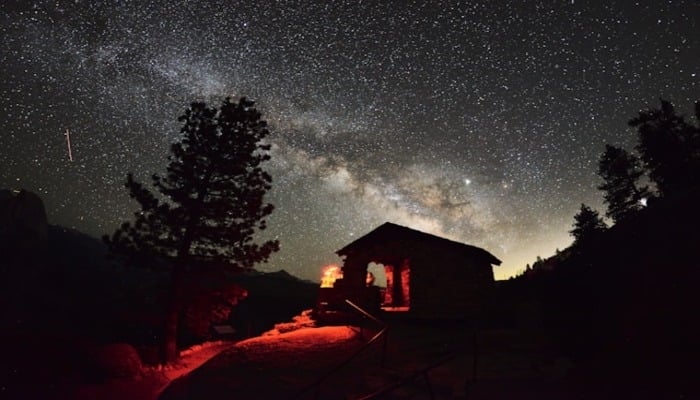
Get ready for an intriguing year loaded with celestial wonders. Stargazers have much to look forward to, from aurora borealis displays to a partial solar eclipse, a total lunar eclipse, and three spectacular supermoons.
It’s time to mark your calendars for these unforgettable astronomical events under clear and dark skies.
First Quadrantid meteor shower of 2025
Let’s kick off 2025 with the annual Quadrantid meteor shower, the most incredible and strongest meteor shower of the year. This celestial event will reach its peak on January 3 and 4 in the United Kingdom (UK), generating up to 120 meteors per hour, illuminating the skies.
Skygazers can get the best view from clear skies with the naked eye. To enhance your experience, move away from light pollution and allow at least 15 minutes for your eyes to adjust to the night sky.
Partial solar eclipse
A partial solar eclipse, a cosmic event, is set to be visible from the UK on March 29. The Moon will be situated between Earth and the Sun, blocking up to 30-40% of the Sun's rays.
This event will start at 10:07 GMT and reach its maximum coverage at 11:03 GMT. It’s recommended to never look directly at the Sun; always use solar filter glasses to keep your eyes safe.
Total lunar eclipse
The UK will witness a total lunar eclipse on September 7. The Moon will turn red as Earth’s atmosphere filters sunlight. The eclipse will last up to one hour and 22 minutes, marking the longest lunar eclipse since 2022.
The eclipse's maximum will occur at 19:11 BST when the Moon is below the horizon.
Three supermoons
2025 will be a year filled with celestial wonders, featuring three supermoons:
- Hunter’s Moon on October 7
- Beaver Moon on November 5
- Cold Moon on December 4
These events occur when the Moon is closest to Earth, offering the best view under clear skies.
Aurora borealis
Aurora borealis, or the Northern Lights, illuminated the skies with dazzling displays several times last year. They appear as brighter, swirling lights in red, purple, green, and blue, produced by charged particles from the Sun.
With the Sun’s 11-year cycle peaking, 2025 is also poised to offer more incredible displays under dark skies.
















